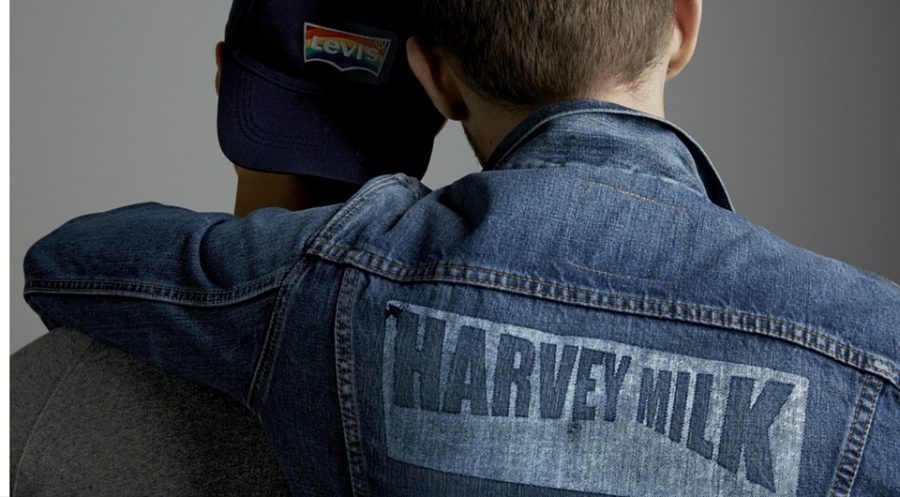Brand Dig: The Brands that are Celebrating Diversity by Unifying through Love
In this blog series, we dig into the world of marketing and discuss brands, news, trends and examples that have made the digital headlines. In this week’s post, marketer Kyle looks at how brands are supporting a different kind of love - the love of difference.
With the recent protests, scandals, right wing politics, racial tensions, war... what the world needs now more than ever is to stand united. That's easier said than done, considering that in a modern-day era, we have so many philosophies that often divide society in half (cough Brexit, cough Trump). It's a gamble for a brand to pick a side that not only stays true to their values but doesn't alienate opposing beliefs. Maybe that is the key though -using the concept of difference to portray love between all people... a feeling every human being shares.
Shock To The Heart, Giving Love a Good Name
Reminding us that love may not be the same for all of us but a sentiment we all share, the "Love Has No Labels" campaign is back, using tactics to remind us that no matter our sexual orientation, religion or ethnicity, we all possess the ability to love. The Ad Council and R/GA used the recent Valentine’s Day to promote free love using the ever-awkward Kiss Cam, (which was predominantly a gimmick at NBL Basketball games) as the the medium to showcase change. The Kiss Cam is usually a camera where they point at a couple (usually a man and a woman) during a live game, whom then kiss in front of thousands of people, as well as a few million others that happen to be tuning in on the telly.
The NFL, Ad Council and R/GA teamed up (which could also use some positivity after Deflategate and the concussion scandal, among others) to challenge the concept of an "accepted love". The brilliance of this comes down to two things: using the stereotypical backdrop of a macho-man football game to challenge preconceptions, and the sheer diversity of everyone involved, to provide real examples that love is a universal feeling between all. This is not the first-time the Ad Council has pulled a stunt like this; back in 2015 they used an X-Ray Machine to challenge the the public's perception of natural love as well.
Put it On and Wear it with Pride,

Bringing attention to homosexuality through an iconic brand is becoming a trend, with brands openly recognising and celebrating Gay Pride after the legalisation of gay marriage. The problem is that sometimes this can fall flat and give the impression that brands are just trying to use this win for the LGBT community to leverage their brand with the latest trend, for example, by incorporating a rainbow in their design.
Cue fashion, an industry that actively working towards recognising different sexual orientations. In terms of “through the ages”, you don’t get many brands that have 'been there and done that' quite like Levis. Founded in May 1853 the famous denim design has seen more change than some countries. This includes remembering the first openly gay politician, Harvey Milk. Assassinated in 1978, Harvey Milk propelled the gay community into the spotlight by fighting for human rights as an elected Californian Public Office Official, making this not just an LGBT issue but a humanity issue.
Partnering with the Harvey Milk Foundation to honour the late activist, Levis launched a gender-neutral clothing line in time for Gay Pride month, to celebrate love between same sexes. Levis essentially used their own product to not only bring attention to equality for all, but ensured that they didn't segregate heterosexuals in the process, which as brand can be a gamble when identifying a common trend. Their clothing line incorporates a broad spectrum of orientations, races and body types, to essentially connect two groups of people (gay and straight) through their product and honour one man's vision that was 30 years in the making: acceptance.
Separated by Different Similarities
When we think of the human race, it's impossible not to wonder how each one of us is different to one another in terms of personality traits, culture, beliefs and even looks. TV 2 perhaps found the best strategy to unify not just people, but a country, by identifying the similarities that lie between our differences. Danish broadcaster, TV 2 used a very simple yet effective method to illustrate just how alike we are to others. Grouping members of the public together into what looks like similar circles, they were soon separated by answering simple questions aimed at dividing.
Once the experiment had taken place, people were astounded (as were we) at who shared similar characteristics with other groups. The Danish government have recently become a centre point for controversy, after passing a new immigration law, as well as a right-wing party putting pressure for cultures to integrate into the traditional Danish religious holidays. TV 2, (the national broadcaster for Denmark) is taking a stance and uniting people through their differences instead of supporting the powers that be. What's amazing though, is that by using traditional viewpoints, and mixing them with modern day ones, they are uniting a blend of people in a unified realm drawing out love between difference.
By using the concept of love when tackling complex issues, these brands have managed to find common ground between people, connecting with their audiences, while still maintaining a strong ethos. So whether it's analysing why John Cena is a good influencer for enforcing acceptance or if GAYtms would work, recognising diversity in brand messaging is of utmost importance.
Pulsar helps brands around the world understand their broad audience demographics and inspire them to adapt to new thinking - if you'd like more information of what we do, get in touch with us here.
